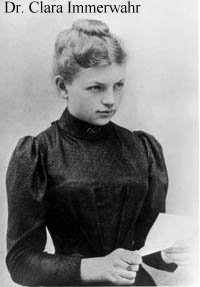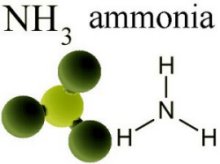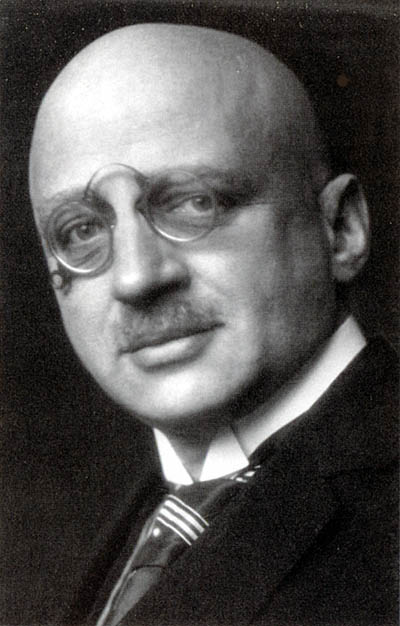Fritz Haber
Today, innocence is drowned. The University of Houston's College of Engineering presents this series about the machines that make our civilization run, and the people whose ingenuity created them.
So many heartbreaking stories emerge out of Nazi Germany. I mean beyond all the vast direct destruction. They echo Yeats timeless lines,
The Blood-dimmed tide is loosed, and everywhere
The ceremony of innocence is drowned.
Meet Fritz Haber about whom Daniel Charles says "the Holocaust stands in the shadows, just out of sight. We know what's coming, but Fritz Haber doesn't." Albert Einstein called Haber's life "the tragedy of the German Jew: the tragedy of unrequited love."
 Haber was born into a well-to-do secular Jewish family in Breslau in 1868, just before the Franco-Prussian War. He grew up in the new German federation, Bismarck's Second Reich. As he studied chemistry in Berlin and Heidelberg, nationalism flowered. Haber did a year of military service, finished a PhD in Switzerland, became an instructor at Karlsruhe and a noted research scientist, and he married another chemist, Dr. Clara Immerwahr.
Haber was born into a well-to-do secular Jewish family in Breslau in 1868, just before the Franco-Prussian War. He grew up in the new German federation, Bismarck's Second Reich. As he studied chemistry in Berlin and Heidelberg, nationalism flowered. Haber did a year of military service, finished a PhD in Switzerland, became an instructor at Karlsruhe and a noted research scientist, and he married another chemist, Dr. Clara Immerwahr.
He worked in so many areas of chemistry. But the jewel in his crown was figuring out how to create ammonia by combining atmospheric nitrogen with hydrogen. When WW-I began, the BASF company was producing ammonia in huge quantities. Today, ammonia is an essential fertilizer. Haber set a worldwide agricultural revolution in motion, and he saved hundreds of millions from starvation. Brot aus luft was the catchphrase -- bread out of air. In 1918, he justly won the Nobel Prize in chemistry for that feat.
 Haber, the German patriot, was now director of the Kaiser Wilhelm Institute, where he'd taken up the cause of the coming war. That included developing poison gases. He developed chlorine gas, for use in war, and Zyklon-B, originally meant as a pesticide.
Haber, the German patriot, was now director of the Kaiser Wilhelm Institute, where he'd taken up the cause of the coming war. That included developing poison gases. He developed chlorine gas, for use in war, and Zyklon-B, originally meant as a pesticide.
He strongly believed in using chemical weapons -- saw no difference between gas and bullets. Despite the fact that Clara loathed the idea, he went off the to Ypres Salient to oversee the first combat use of chlorine gas in the Spring of 1915.
Here things go bad. He came back to Berlin on a weekend leave. As best we know the events of that night, he and Clara argued heatedly. Then she found his service revolver and committed suicide. The dedicated Haber -- well, he went back to the front the next day.
He eventually remarried and garnered honors -- while he struggled through the depression and Hitler's rise. In 1933 he was ordered to fire all Jews in his Institute. He was told he could stay, despite being Jewish. He refused the order and instead left Germany, only to die of heart failure within a year.
A few years later, the Nazis put Haber's arsenic-based Zyklon-B to use in their concentration camp gas chambers where it killed many members of the Haber clan. Fritz Haber's ammonia process was the greatest gift to a hungry world in modern times. But his story is told in Zyklon-B as much as in ammonia. And, not for the first or last time, innocence drowns before us in the wake of war.
I'm John Lienhard, at the University of Houston, where we're interested in the way inventive minds work.
D. Charles, Master Mind: The Rise and Fall of Fritz Haber, the Nobel Laureate Who Launched the Age of Chemical Warfare. (New York: HarperCollins, 2005).
M. Anders, Fritz Haber. Culinary Biographies, Alice Arndt, ed. (Houston, TX: Yes Press, Inc. 2006): pp. 195-198. My thanks to Robert Arndt for providing the book and suggesting Haber as a topic.
M. Goran, Haber, Fritz. Dictionary of Scientific Biography, C. C. Gillispie, ed., Vol. V (New York: Charles Scribner's Sons, 1972): pp. 620-623.
See also: https://en.wikipedia.org/wiki/Haber_process
and: https://en.wikipedia.org/wiki/Fritz_Haber
For more on the Haber Process, see: http://www.ewart.org.uk/science/patterns/pat11.htm

Fritz Haber (Image in the public domain)